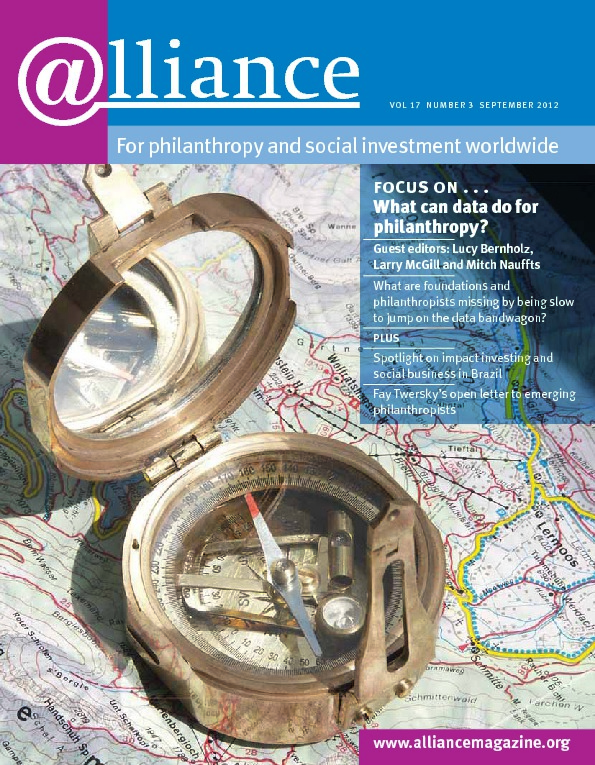As I see it, the key tension when it comes to data is between the general desire to have data about everything in all possible detail and its ultimate usability. The most popular generic project idea in data development is creating a database and making it available online for everyone’s use. I come across projects like this in different philanthropy-related areas every other month. Their creators sincerely believe that a database will foster transparency and cooperation, help to avoid duplication, and generally solve pretty well all the problems of the sector. I am not so sure.
There is this widely known saying: ‘When you’ve seen one foundation – you’ve seen one foundation.’ The greatest difficulty for collecting data about foundations is that they are all so different that generalizations hardly work. I am part of a Russian Donors Forum working group that is developing a framework for mapping Russian foundations so as to have reliable data about the philanthropic sector in Russia. To come up with a universal questionnaire, we had to abandon a lot of important details: either the questions were not sufficiently widely applicable or we knew that foundations would not be able to provide the information for technical reasons or the information would not be comparable. But details are important! So when we collect data and present them in an aggregated form or according to a general standard, we may end up with ‘average temperature in a hospital’, losing important details or losing the point altogether.
A classic example: there is no standard framework for foundations’ financial management information, so asking how much they spend on grants, their own programmes and administration will produce non-comparable data – foundations simply count differently. And this is not just a Russian problem. I once did a quick review of annual reports of a few large US and European foundations with the same question about their budgets in mind and ended up with lots of line items and figures that were as different as apples and oranges.
We should be particularly aware of these limitations where data are presented to the public. In many countries, Russia included, public awareness about philanthropy is limited and charities and foundations are often not trusted. All too easily the public may see in our data something completely different from what we intended. Data for public use therefore need a lot of context and interpretation to ensure that what they present is a true reflection of a particular aspect of the sector. Otherwise we run the risk of being misunderstood or misinterpreted. I am not advocating secretiveness, but we should be conscious of the audiences for which data are intended and frame them accordingly.
I also think that data we produce for the public should be simple and self-explanatory. We badly need more of this kind of basic data for our own community too. How many foundations are there? How much do they give annually? How many people benefit from their grants and programmes? Data like these can raise public awareness and promote public debate about philanthropy.
My experience is that the best way of collecting and presenting data for this purpose is through indexes and ratings. A fairly simple Charities Aid Foundation World Giving Index produces more media references than anything we have done in Russia in the last 18 years! I see three major benefits in such indexes: they answer a basic framing question (how many people give to charity in the world?), they present very easy-to-read trends (our country is doing better from year to year) and they are comparative (we are doing better than our neighbours). This is attractive for the media and understandable to the public. An additional value of indexes and ratings may be in setting up targets for government policy. For example, the Russian government has made strides to improve Russia’s position in the World Bank’s Doing Business index.
The great disadvantage of indexes is that they reduce complex ideas to very basic figures, and their methodology is usually criticized by research specialists. But they are good for giving vivid snapshots that invite interpretation and discussion, and they provide an opportunity to introduce details to the public that they would otherwise not be prepared to digest.
Some philanthropy professionals badly need complex data to facilitate professional exchange, partnerships, learning and sharing. Many more people, including foundations’ constituencies and regulators, need simple data that can help them to understand what our sector is really about. If I had to choose how to deploy my limited resources, I would go for the latter.
Maria Chertok is director of CAF Russia. Email mchertok@cafrussia.ru.





Comments (0)